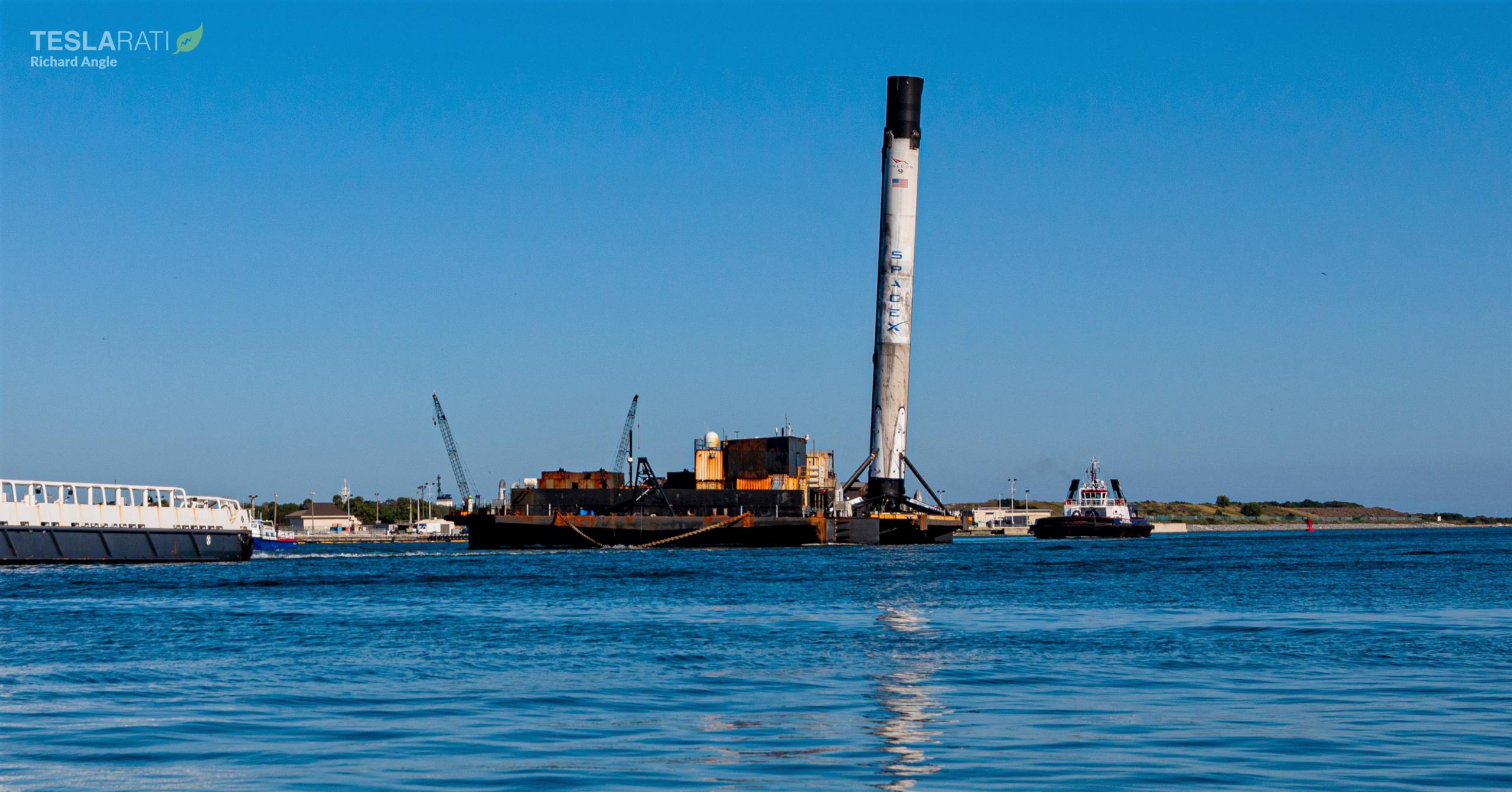

News
SpaceX almost loses Falcon 9 booster at sea
After more than a week at sea, the SpaceX Falcon 9 booster responsible for the company’s 100th successful landing finally returned to port on Wednesday, revealing that it nearly toppled into the sea during the recovery process.
Falcon 9 B1069 completed its first launch without issue early on December 21st, carrying a reused Cargo Dragon capsule into space and sending it on its way towards orbit and the International Space Station (ISS). Nine minutes after liftoff, it touched down on drone ship Just Read The Instructions (JRTI) without any apparent issue, more or less hitting the platform’s painted bullseye. While it’s difficult to determine with certainty, B1069 appeared to be in fine condition after landing, standing roughly straight up with all nine Merlin 1D engines well above the drone ship’s deck.
That was decidedly not the case when the once-flown Falcon 9 booster finally sailed into Port Canaveral eight and a half days later.
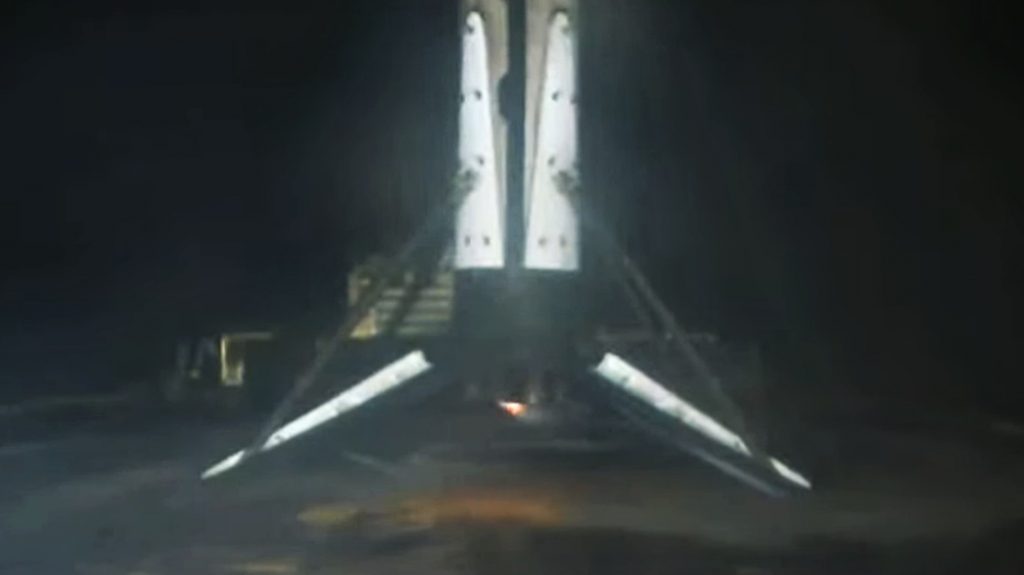
There remains plenty of ambiguity about how exactly things transpired after the landing but when B1069 was finally within eyeshot, the booster was significantly damaged, riding low on all four legs, inches away from falling off the drone ship’s deck, and only partially attached to the “Octagrabber” robot tasked with securing it. Based on photos of the damaged rocket taken by Teslarati photographer Richard Angle, most or all of B1069’s nine Merlin 1D (M1D) engines suffered likely irreparable damage to their fragile bell nozzles.
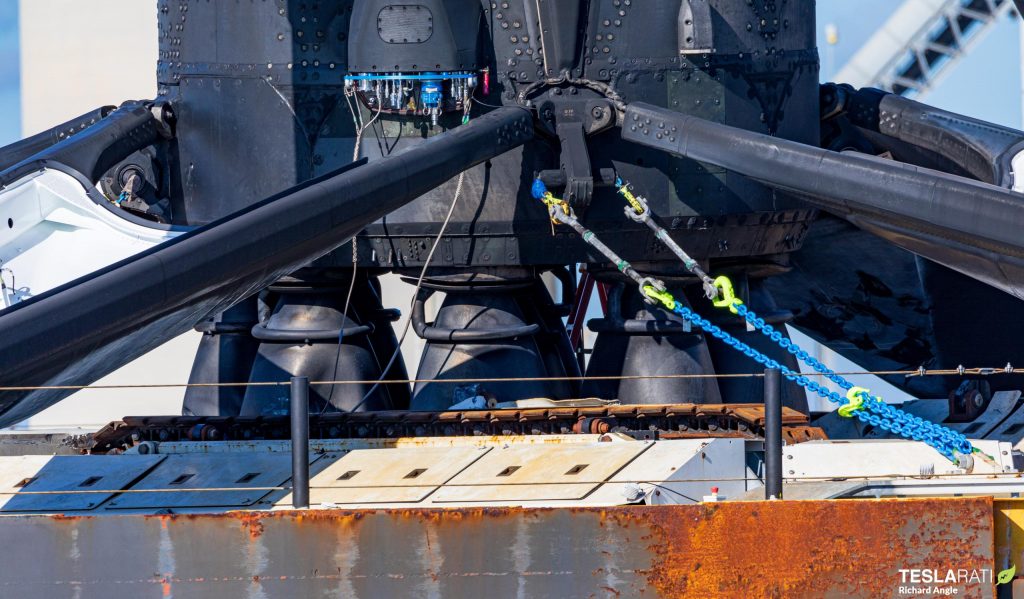
From the ragged nature of the damage to those nozzles, it appears that B1069 somehow fell on top of the drone ship’s Octagrabber robot during or after its recovery attempt, as the creases would be far cleaner if the booster had merely landed hard and pressed its M1D nozzles against the deck. But a very short fall onto Octagrabber still doesn’t quite explain the apparent damage to one of the booster’s landing legs or the fact that it’s sitting lower to the deck than usual – both potentially indicative of a hard landing.
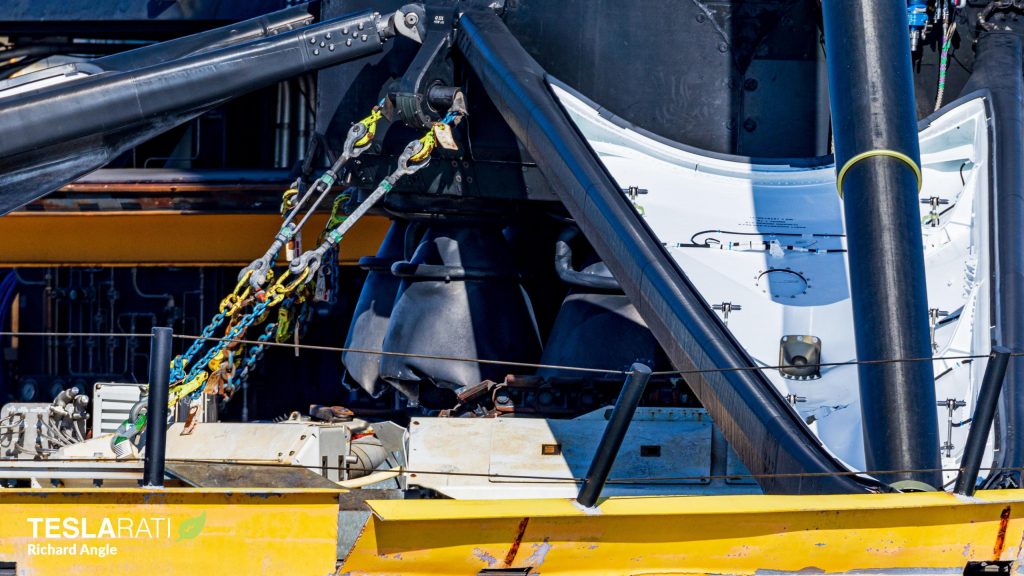
What is clear, though, is that SpaceX struggled to secure the rocket shortly after its first landing. Per the CRS-24 webcast, B1069 landed just shy of dead center. Likely as a result of poor sea conditions, SpaceX was unable to quickly grab the booster with Octagrabber, which uses giant clamps and its own weight to hold Falcon first stages in place. B1069 then clearly slid around drone ship JRTI’s deck at the whim of the ocean. Before SpaceX could secure it, the booster slammed into the side of the drone ship hard enough to partially flatten a steel safety barrier that runs along its port and starboard beams – a barrier specifically put in place to prevent wayward boosters from sliding off the deck.
Thankfully, above all else, there is no obvious reason that SpaceX won’t be able to repair the damage that was wrought. Replacing all nine of B1069’s engines will heavily delay the booster’s return to flight and probably singlehandedly cost SpaceX at least $5-10 million, but that cost is still far less than scrapping it and building a new booster. Aside from that, it’s possible that B1069’s fall will preclude strict customers like NASA or the US military from reusing the booster to launch their payloads, which the booster would have otherwise been a shoo-in for with just a single NASA launch on its record.
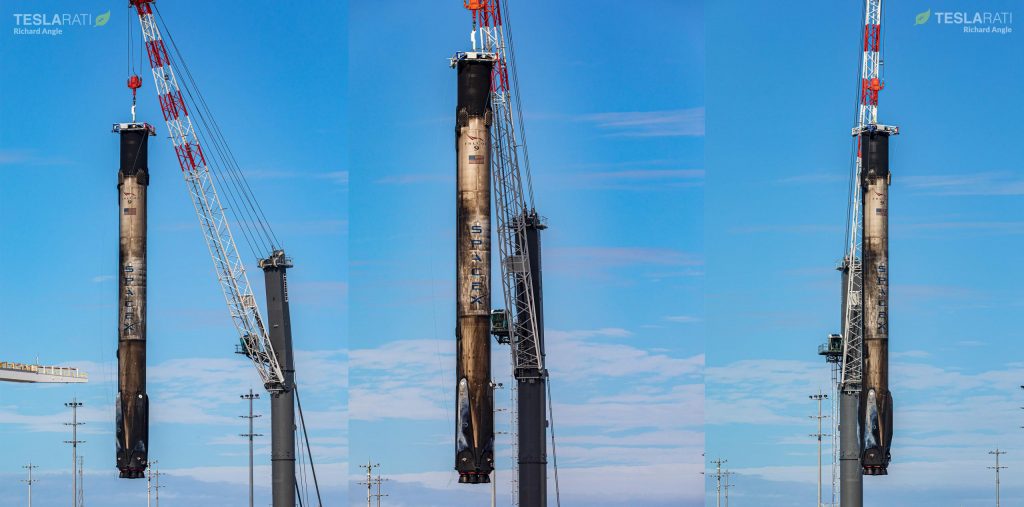
While CRS-24 and B1069’s dramatic return was SpaceX’s last launch and booster recovery of the year, the company did safely recovery several other boosters sans damage in the days and weeks prior. On December 14th, Falcon 9 B1061 was spotted being craned onto dry land after its fifth launch – NASA’s tiny IXPE X-ray space telescope.
Falcon 9 booster B1067 arrived at Port Canaveral not long after but spent most of the winter holiday sitting on drone ship A Shortfall of Gravitas (ASOG) as many SpaceX employees took a well-deserved break. The thrice-flown booster was ultimately lifted onto the dock and broken over a few days before B1069 finally sailed into port, setting it up for a fourth launch in the very near future.
Ultimately, while the damage B1069 and JRTI’s Octagrabber seemingly suffered are a significant annoyance and will take a good deal of time and money to fix, SpaceX still has ten other operational Falcon 9 boosters ready to support a potentially record-breaking 2022 launch manifest.

Elon Musk
Tesla CEO Elon Musk sends rivals dire warning about Full Self-Driving

Tesla CEO Elon Musk revealed today on the social media platform X that legacy automakers, such as Ford, General Motors, and Stellantis, do not want to license the company’s Full Self-Driving suite, at least not without a long list of their own terms.
“I’ve tried to warn them and even offered to license Tesla FSD, but they don’t want it! Crazy,” Musk said on X. “When legacy auto does occasionally reach out, they tepidly discuss implementing FSD for a tiny program in 5 years with unworkable requirements for Tesla, so pointless.”
I’ve tried to warn them and even offered to license Tesla FSD, but they don’t want it! Crazy …
When legacy auto does occasionally reach out, they tepidly discuss implementing FSD for a tiny program in 5 years with unworkable requirements for Tesla, so pointless. 🤷♂️
🦕 🦕
— Elon Musk (@elonmusk) November 24, 2025
Musk made the remark in response to a note we wrote about earlier today from Melius Research, in which analyst Rob Wertheimer said, “Our point is not that Tesla is at risk, it’s that everybody else is,” in terms of autonomy and self-driving development.
Wertheimer believes there are hundreds of billions of dollars in value headed toward Tesla’s way because of its prowess with FSD.
A few years ago, Musk first remarked that Tesla was in early talks with one legacy automaker regarding licensing Full Self-Driving for its vehicles. Tesla never confirmed which company it was, but given Musk’s ongoing talks with Ford CEO Jim Farley at the time, it seemed the Detroit-based automaker was the likely suspect.
Tesla’s Elon Musk reiterates FSD licensing offer for other automakers
Ford has been perhaps the most aggressive legacy automaker in terms of its EV efforts, but it recently scaled back its electric offensive due to profitability issues and weak demand. It simply was not making enough vehicles, nor selling the volume needed to turn a profit.
Musk truly believes that many of the companies that turn their backs on FSD now will suffer in the future, especially considering the increased chance it could be a parallel to what has happened with EV efforts for many of these companies.
Unfortunately, they got started too late and are now playing catch-up with Tesla, XPeng, BYD, and the other dominating forces in EVs across the globe.
News
Tesla backtracks on strange Nav feature after numerous complaints

Tesla is backtracking on a strange adjustment it made to its in-car Navigation feature after numerous complaints from owners convinced the company to make a change.
Tesla’s in-car Navigation is catered to its vehicles, as it routes Supercharging stops and preps your vehicle for charging with preconditioning. It is also very intuitive, and features other things like weather radar and a detailed map outlining points of interest.
However, a recent change to the Navigation by Tesla did not go unnoticed, and owners were really upset about it.
For trips that required multiple Supercharger stops, Tesla decided to implement a naming change, which did not show the city or state of each charging stop. Instead, it just showed the business where the Supercharger was located, giving many owners an unwelcome surprise.
However, Tesla’s Director of Supercharging, Max de Zegher, admitted the update was a “big mistake on our end,” and made a change that rolled out within 24 hours:
The naming change should have happened at once, instead of in 2 sequential steps. That was a big miss on our end. We do listen to the community and we do course-correct fast. The accelerated fix rolled out last night. The Tesla App is updated and most in-car touchscreens should…
— Max (@MdeZegher) November 20, 2025
The lack of a name for the city where a Supercharging stop would be made caused some confusion for owners in the short term. Some drivers argued that it was more difficult to make stops at some familiar locations that were special to them. Others were not too keen on not knowing where they were going to be along their trip.
Tesla was quick to scramble to resolve this issue, and it did a great job of rolling it out in an expedited manner, as de Zegher said that most in-car touch screens would notice the fix within one day of the change being rolled out.
Additionally, there will be even more improvements in December, as Tesla plans to show the common name/amenity below the site name as well, which will give people a better idea of what to expect when they arrive at a Supercharger.
News
Dutch regulator RDW confirms Tesla FSD February 2026 target
The regulator emphasized that safety, not public pressure, will decide whether FSD receives authorization for use in Europe.
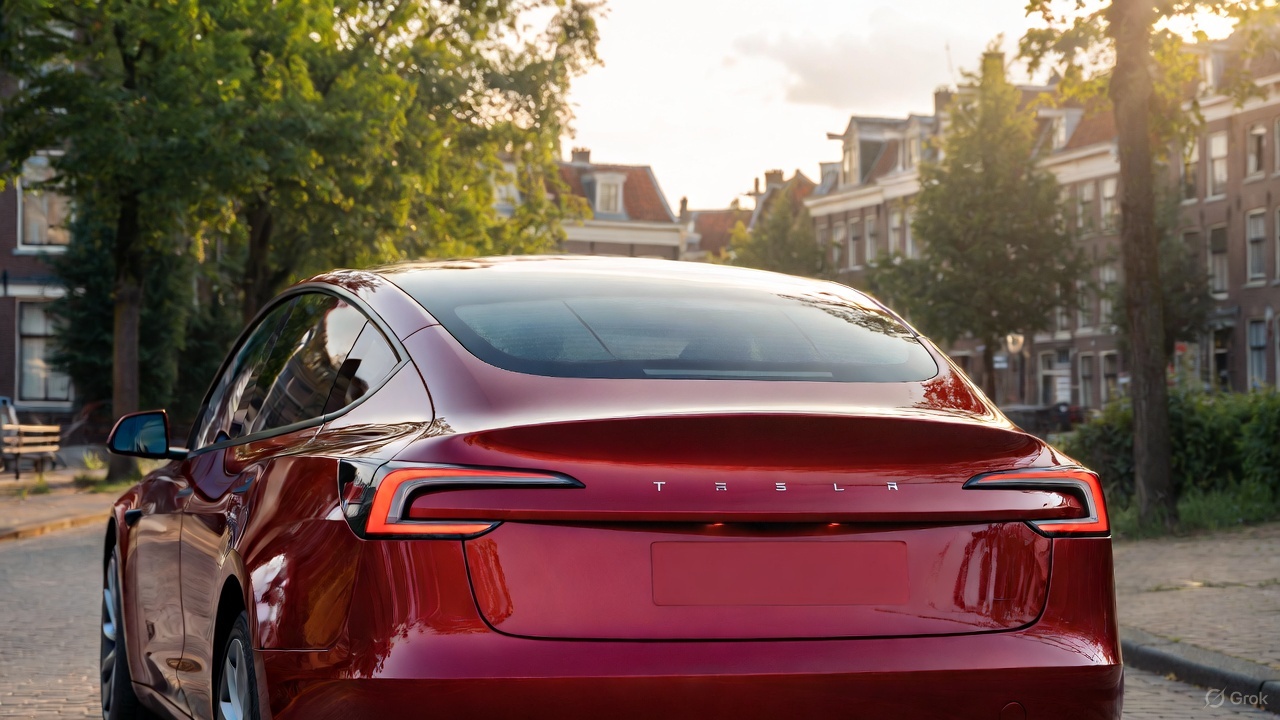
The Dutch vehicle authority RDW responded to Tesla’s recent updates about its efforts to bring Full Self-Driving (Supervised) in Europe, confirming that February 2026 remains the target month for Tesla to demonstrate regulatory compliance.
While acknowledging the tentative schedule with Tesla, the regulator emphasized that safety, not public pressure, will decide whether FSD receives authorization for use in Europe.
RDW confirms 2026 target, warns Feb 2026 timeline is not guaranteed
In its response, which was posted on its official website, the RDW clarified that it does not disclose details about ongoing manufacturer applications due to competitive sensitivity. However, the agency confirmed that both parties have agreed on a February 2026 window during which Tesla is expected to show that FSD (Supervised) can meet required safety and compliance standards. Whether Tesla can satisfy those conditions within the timeline “remains to be seen,” RDW added.
RDW also directly addressed Tesla’s social media request encouraging drivers to contact the regulator to express support. While thanking those who already reached out, RDW asked the public to stop contacting them, noting these messages burden customer-service resources and have no influence on the approval process.
“In the message on X, Tesla calls on Tesla drivers to thank the RDW and to express their enthusiasm about this planning to us by contacting us. We thank everyone who has already done so, and would like to ask everyone not to contact us about this. It takes up unnecessary time for our customer service. Moreover, this will have no influence on whether or not the planning is met,” the RDW wrote.
The RDW shares insights on EU approval requirements
The RDW further outlined how new technology enters the European market when no existing legislation directly covers it. Under EU Regulation 2018/858, a manufacturer may seek an exemption for unregulated features such as advanced driver assistance systems. The process requires a Member State, in this case the Netherlands, to submit a formal request to the European Commission on the manufacturer’s behalf.
Approval then moves to a committee vote. A majority in favor would grant EU-wide authorization, allowing the technology across all Member States. If the vote fails, the exemption is valid only within the Netherlands, and individual countries must decide whether to accept it independently.
Before any exemption request can be filed, Tesla must complete a comprehensive type-approval process with the RDW, including controlled on-road testing. Provided that FSD Supervised passes these regulatory evaluations, the exemption could be submitted for broader EU consideration.








